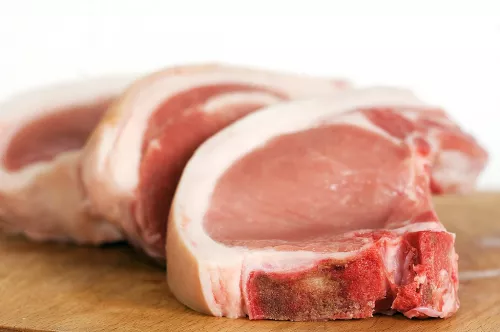Growth in production, reduced exports amid logistical difficulties due to hostilities in Ukraine, as well as a decrease in domestic demand due to falling incomes of the population, could seriously worsen the position of Russian pork producers. Market participants fear that by the end of the year, the average prices for this meat may drop by 5–10%, which threatens to leave the market for some players. Large companies are already suspending the implementation of new projects.
The average annual wholesale prices for pork at the end of this year, under an unfavorable scenario, may decrease by 5-10%. Such a forecast is contained in the presentation of the National Union of Pig Breeders (NSS). In 2021, the average annual prices for this meat increased by 24.8%, to 124.8 rubles. for 1 kg. Large pork producers, including Cherkizovo Group, Rusagro Group and Prodo Group, did not provide any comments.
The key factor that will lead to a possible reduction in prices is the growth of pork production and, as a result, a glut of the market, says Yury Kovalev, General Director of the NSS.
According to preliminary data, in the first six months of this year, the production of pork in live weight will increase by 6.4%, to 2.7 million tons year-on-year. In total, by the end of 2022, the increase in production is expected at the level of 200 thousand tons. In 2021, 4.9 million tons of pork were produced.
Difficulties with exports also negatively affect the market. As a source in the industry explains, the strengthening of the ruble has reduced the competitiveness of Russian pork. At the same time, the possibility of supplying products to the markets of China and Vietnam was practically nullified, since domestic pork production was fully restored in the countries. Additionally, shipments are affected by logistical problems that worsened in April 2022 against the backdrop of the Russian military operation in Ukraine and a new wave of Western sanctions, follows from the presentation. According to NSS estimates, in January-June 2022, pork exports will decrease by 23%, to 81.6 thousand tons, year-on-year. By the end of the year, an additional 50,000 pork will be on the domestic market, the NSS expects.
According to market participants, in general, an additional 250,000 tons of products will “pressure” the pork market this year.
And demand may decrease due to the situation with consumer incomes, follows from the presentation of the NSS. According to the forecasts of the Ministry of Economy, the real disposable income of the population this year may decrease by 6.8%.
As Yury Kovalev notes, increasing demand from the population is the only way to remove the risk of market oversaturation. It will not be possible to reduce meat imports, it is already at a minimum level - about 5% of consumption, and there are no prerequisites for increasing exports yet, he points out.
The head of the National Meat Association, Sergei Yushin, believes that indexation of salaries of state employees and social benefits can support pork consumption. Russian Prime Minister Mikhail Mishustin previously announced the indexation from June 1 to 10% of the minimum wage (minimum wage), the subsistence minimum and pensions for non-working pensioners. According to him, the measure will affect more than 50 million citizens, the total amount of indexation is more than 500 billion rubles.
According to Mr. Kovalev, if the glut of the pork market continues for the next one or two years, companies with low efficiency can be expected to leave the market.
According to NSS estimates, an increase in the cost of grain and feed components purchased for foreign currency led to an increase in the average annual cost of pork in 2021 by 25-30% compared to 2019. This makes it critically difficult to repay loans for a number of industry enterprises, the presentation notes. Sergei Yushin, however, notes that the situation with production costs has stabilized this year and the 25 largest companies in the industry do not plan to reduce output, although they do not plan to launch new projects in order to understand what will happen to the country's economy and demand in export markets.
A market source adds that the factor of the technological dependence of Russian meat processing enterprises on imports is underestimated. Up to 80% of the equipment and its components are produced in the EU, and difficulties in updating the means of production threaten to reduce meat output, the source emphasizes.
© Inline LLC 2015-2026. Privacy Policy | Terms of Service